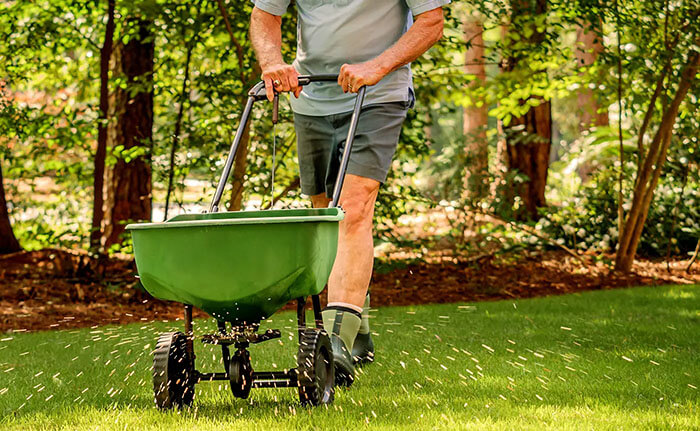How to plant grass in spring: 4 tips
How to plant grass in spring: 4 tips
Spring is a good time to plant a new lawn or rejuvenate an existing one. The cooler temperatures and frequent rains of spring provide a good environment for new grass to establish itself before the heat of summer. Seeding grass is not a complicated task, but you’ll have more success by using some tricks. Here are 4 tips for seeding grass in the spring.

Prepare the soil before seeding grass in the spring
Once the soil has thawed and absorbed the excess water from the melting snow, it is time to prepare it for seeding. If you are seeding a new lawn, start by loosening the soil to a depth of about 2 to 3 inches. Use a rake to remove debris and stones. To improve the existing soil, spread a quality top soil that contains compost.
For an existing lawn, cut it as short as possible and rake out debris before adding new soil. Take this opportunity to level the lawn by filling in the holes.
Use a lawn seed spreader
A seed spreader is your best bet for seeding your lawn, especially if you have a large yard. To do this, put half the grass seed in the spreader. Sow the seeds on the prepared soil, going back and forth creating parallel rows. Add the remaining seeds to the spreader and sow them in the opposite direction. For example, if you sow the first half walking north to south, walk east to west for the second half.
Lightly bury the grass seed with a rake
To protect the new seed from wind, birds and weather, and to allow it to grow properly, you will need to cover it with a light layer of soil. To bury the grass seed, turn your rake so that the tines are facing up. Slide the rake across the soil surface to cover the seeds with no more than a quarter inch of soil.
Make sure the floor is always moist but not soggy
water it. The goal is to moisten the soil without flooding it. The most useful tool for watering a new lawn is the oscillating sprinkler. Remember to move it around during watering sessions to ensure that you don’t overwater and that the entire area receives enough water.
Since spring is often rainy, you probably won’t need to water every day. But make sure the soil and seed are always moist, until the new lawn reaches a height of 2 inches.

Finally, when seeding grass in the spring, wait until the lawn reaches a height of about 3 inches before trimming.